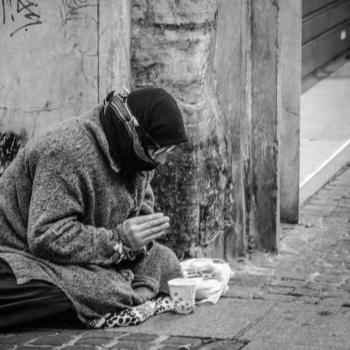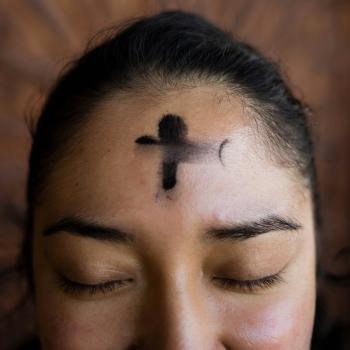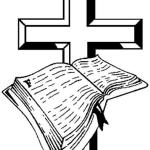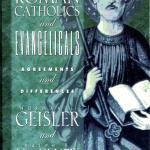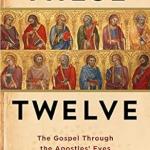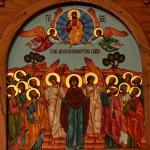 Living on Hope While Living in Babylon: The Christian Anarchists of the 20th Century
Living on Hope While Living in Babylon: The Christian Anarchists of the 20th Century
by Tripp York
Wipf and Stock / $17.00 US (list)
[Amazon] [Wipf and Stock]
The publication of Tripp York’s Living on Hope While Living in Babylon marks a significant contribution to the recently re-emerging interest in the connection between Christianity and anarchism and for that reason should be celebrated. Very little scholarship exists regarding these questions, and the less these concerns remain marginal to political theology the better. The book is a revised version of York’s master’s thesis on anarchism and Christianity. Chapter one describes why Christianity and anarchism resonate with one another. Chapter two seeks to go beyond what York calls a merely “revolutionary” type of Christian anarchism toward what he calls an anarchistic “apocalyptic politics.” Chapters three through five each describe Christian individuals or movements whose praxis subverted the “triple axis of evil” of imperial politics described by Martin Luther King, Jr.: materialism, racism, and militarism. These chapters focus, respectively, on the Catholic Worker movement, Clarence Jordan of the Koinonia movement, and the Berrigan Brothers.
The book starts off strong in chapter one, lamenting the marginalization of anarchism and anarchists in society and in the church, a marginalization that York says is especially unjustified in light of the influence anarchists have had in promoting social justice in the united states (1). What follows is one of the better explanations of what anarchists generally do and do not believe that I have seen. Engaging classical anarchists such as Proudhon and Malatesta and contemporary ones such as Howard Zinn, York insists rightly that anarchism does not create or advocate “disorder,” but rather it is the capitalist state system which creates “dis-order”: “If anarchists are against anything, they are against the kind of chaos that arises from what they see as the unnatural relationships that occur through governments and its people” (7). Additionally, anarchists are not only against this dis-order, but for an alternative vision of human society, “the kind of society in which humanity can flourish” (8).
The chapter also deals with the questions of anarchism’s relationship to authority and to violence. On the latter, York dispels the myth that anarchists are, by definition, advocates of violence: “[T]he specter of the violent anarchist, while there have been some in history, pales in comparison to the historical reality of the violent archist. Indeed, one wonders whether or not those who assume the necessity of government can even entertain a position of nonviolence” (10). Finally, chapter one explains well in general terms why Christians should find much in anarchism that resonates with the radical claims of Christian faith. At the root of this connection, York says, is the fact that our hope as Christians is rooted in the Kingdom of God, not in the claims of the state (2). Refusing to place ultimate hope in the state does not mean advocating withdrawal from the world, but a reopening of the question of what “responsible activity” in the public realm might mean (3). York deals here with the inevitable question of whether or not embedded in this view is an unrealistic optimism about the human person and a neglect of the reality of sin, noting that anarchists can rightly criticize Christians for being overly pessimistic, or in Christian language, “for not living into the resurrection made possible by the kingdom that is already, yet not fully, here” (9).
While I would strongly recommend chapter one of York’s book to any person wondering just what on earth “Christian anarchism” might mean, I begin to have problems with the book in chapter two. In that chapter, York sets out to distinguish between Christian anarchism and “secular” anarchism, describing the former in terms of “apocalyptic politics.” While chapter one discerned continuity and resonance between Christianity and various forms of anarchism, this chapter is focused on discontinuity and dissonance.
Part of York’s process of making this distinction centers around the notion of “revolution,” and he is particularly insistent that Christians should be suspicious of any notion of revolution. In fact, he goes so far as to claim that “Christian anarchism is not a revolutionary politic for it denies the legitimacy of revolution. […] Christian anarchism rejects the very presuppositions that make the idea of revolution, and, perhaps, even liberation itself, intelligible” (30, emphasis added). York insists that the early Christians were not subversive because they were “revolutionary,” but because they told a “different story” about a “different king”: “It is because of this particular story that the early Christians were viewed as subversive. They were not subversive because they sought liberation…. Ultimately, they introduced a radically different kind of subversion — one that does not attempt to simply undermine the system but to convert it. The key to such conversion rests not in the ability to rebel against power, but in the Christian’s commitment to pray for it” (31).
But in the course of these reflections, York relies to some extent on Walter Wink, citing his statement that “Violent revolution fails because it is not revolutionary enough,” which clearly takes a different approach than York, not rejecting revolution as such, but revolutions that rely on violence. The difference between York and Wink reveals that definitions are important. When York uses the term “revolution,” he seems to mean a mere change of regime through the use of violence: “Jesus is neither exemplified in Che Guevera or Simon the Zealot. He had no desire to destroy or replace the kingdoms that surrounded him with a different ruler” (30). Although this is in some sense true, unlike Wink, York rejects “revolution” in toto and in doing so reinscribes imperialist Christianity’s condemnation of social change, re-narrating an essentially alienating view of Christianity. Similarly, I am suspicious of York’s need to oppose revolution/rebellion and conversion. Why not show that real revolution involves real conversion, and that it is not simply a matter of “telling another story” or “praying for power,” both of which the powers have had no trouble tolerating throughout history? In today’s pluralistic societies, for example, “telling different stories” is exactly what is tolerated so long as the “real” story, embodied in concrete social conditions and backed up by state power, rules the day. York here is missing the connection between the different “story” that Christianity tells and the praxis of liberation. “Telling a different story” is not enough. Indeed, in York’s version of Christian anarchism/apocalyptic politics, as with many theologies that rely too heavily on the notion of “narrative” alone, narrative theology has no other choice but to be another “opium of the people.”
There is much to applaud in York’s account of the “apocalyptic politics” of Christianity. The focus he places on the cross, for example, is one of the strengths of York’s political theology: “Our [i.e. Christian] politics stem from the cross that the politics of the world erected” (22). But York goes on to present his version of the church vs. world binary, a theological construction that I have come to find much too simplistic. For example, York says that the church must “come to terms with how it operates as politically different from the world” (22), and that “[t]he people of the cross are at odds with those that erect such crosses” (23). Does “the world” as a whole erect crosses while “the church” as a whole bears them? I’m sure York does not think this to be the case, but the binary opposition he sets up leads to such ideas. Perhaps he would reply that he is using the term “world” in the Johannine sense of that portion of creation that opposes the peaceableness of Christ’s reign. But if so, he goes on to say that cross-making and cross-bearing are two ways of “being in the world” (23).
Like the confusion around the word “revolution,” York does not seem to present a consistent definition of “world,” sometimes opposing it to “church” while elsewhere speaking very positively of the “world” simply as creation. But the way “the world” is understood makes all the difference. For if we simply oppose the “politics of the world” and the “politics of the church,” as York does in so many places in this book, we obscure the fact that there are people and movements in “the world” who are not “people of the cross” but who are also at odds with those that erect crosses, for example the various emancipatory movements that have irrupted throughout history. York’s binary of “world” and “church”/”people of the cross” is a binary that excludes irruptions of the Kingdom outside of that which we usually call “church.” Likewise, the church/world binary obscures the fact that the church has erected a not a few crosses in history itself, serving imperialist violence with a cross-centered theology of empire. Historically speaking, it is simply not the case that “the people of the cross are at odds with those that erect such crosses.” Far too often the “people of the cross” have been the crucifiers.
In fact, this latter insight — that the churches have often (usually?) sided with the crucifiers — is a basic feature of anarchism, a critique of Christianity that most if not all anarchists in history have made. But this key anarchist critique is, on my reading, absent from York’s book. Perhaps this is because York admits up front that he does not propose to engage in a real dialogue with anarchism, but will rather only “adopt… the terminology of anarchism to make certain arguments” (xiii). “When appropriate,” he says, “dialogue with proponents of anarchism will occur, but never as an attempt to replace or reformulate the all-encompassing task of simply being a Christian” (xv). Here we see again the dangers of the church/world binary so central in York’s book. Because “the church” has a “different politics” than “the world,” anarchism is not really worthy of serious engagement. Indeed, in this view it seems that Christianity may not really be dialogued with. York seems content to pick through historic anarchists texts and to take what seems to serve his arguments, but nowhere does he seem willing to be challenged by various anarchist approaches or claims. Nowhere, for example, does he seem willing to hear the anarchist view that Christian claims of “uniqueness” and that it represents the “true, genuine politic” have precisely provided the theo-ideological justification for much of the violence in the history of the West. Christians need to hear that anarchist critique and to take a stance of humility in response rather than one that sadly comes across as triumphalistic distancing.
The binary view of Christian politics so strongly argued in chapter two taints the picture that is given of the three individuals and/or movements that are described in the next chapters. These chapters provide good summaries of these movements, but throughout their narration is the assumption that these people saw themselves as fundamentally different than and separate from “secular” activists and viewpoints. “They understood that to be Christian was to be different. They were different from the world, from the secularists, from the pious, they were different from the capitalists and they were different from the communists. Even though they lived in a manner that might best be described as anarchical, they were different even from the anarchists” (109). This does not seem to be entirely true, especially in the case of the two sets of Roman Catholic “anarchists” that York invokes: The Catholic Worker movement and the Berrigan Brothers. In the Catholic imagination, there is not a hard division between “Christian” and “secular,” or between “church” and “world,” and indeed the Catholic personalities he cites were constantly involved alongside “secular” activists. Dorothy Day was famously in dialogue with anarchists and communists both intellectually and concretely in the various movements in which she was involved. The Catholic Worker continues this tradition of collaboration today. The Berrigan brothers were also involved deeply with the “secular” left, including a friendship with Howard Zinn. This is not to say that a Catholic approach never sees difference or would deny that Christians are rooted in “another story,” etc. But I question the extent to which Dorothy Day and the Catholic Workers or the Berrigans and the Plowshares movement would share York’s emphasis on difference and separateness or his largely non-dialogical approach.
A final concern has to do with the way the book is centered completely on movements and individuals in the united states with no inclusion of radical Christian movements elsewhere in the world. If, as York implies, the united states is a particularly troublesome imperialistic and crucifying power in the world, does it not make sense to seek out the viewpoints of those who are on the receiving end of u.s.american violence? York, for example, includes absolutely no engagement with liberation theology or liberationist forms of Christianity in Latin America or elsewhere. In fact, York’s comments about “revolution” could be read as a backhanded criticism of various liberationist Christianities without mentioning them by name. York’s reflections could have benefited from an engagement with Salvadoran liberation theologian Jon Sobrino, particularly in the way the latter reflects so strongly on the cross and the relationships between the crucifiers and the crucified.
I feel like I have dwelt on my critiques of York’s book without expressing as strongly my real appreciation for the fact that he took on this topic. But it is vital that we spend time dealing with some of the assumptions that underlie York’s reflections because they seem to be so common among recent advocates of “Christian anarchism.” Christian anarchists enjoy calling themselves by that name as a distinguishing marker: distinguishing themselves from “politics as usual” as well as from “mainstream” Christianities. But Christian anarchists need to begin to become accountable for their use of the term “anarchism,” not simply appropriating it with no intention of engaging actual anarchism and actual anarchists. I’d like to see Christian theological engagement with anarchism that takes a more “C/catholic” approach rather than the either/or approach that has dominated the discussion so far.
What we need is an anarchist political theology that has learned from anarchism because it has been in real dialogue with it and has even been challenged by it. Thankfully there are some emerging Christian theologians who are doing just that: I am thinking of Alexandre J. M. E. Christoyannopoulos who has published several articles on Christian anarchism and has edited an interreligious collection called Religious Anarchism, Lee Griffith (see his “Called to Christian Anarchy?” in God and Country?: Diverse Perspectives on Christianity and Patriotism, ed. Michael G. Long and Tracy Wenger Sadd [New York: Palgrave MacMillan, 2007]) and Andy and Nekeisha Alexis-Baker’s impressive academic work and online Jesus Radicals project/community. The latter is especially rooted in a real personal identification with anarchism and a praxis of dialogue and openness to intellectual and praxial conversion. These scholars represent the kind of engagement with anarchism that is needed for the twenty-first century, an engagement that leaves the triumphalism of the past behind and seeks first the Kingdom wherever it is emerging, both inside the church and outside of it.




